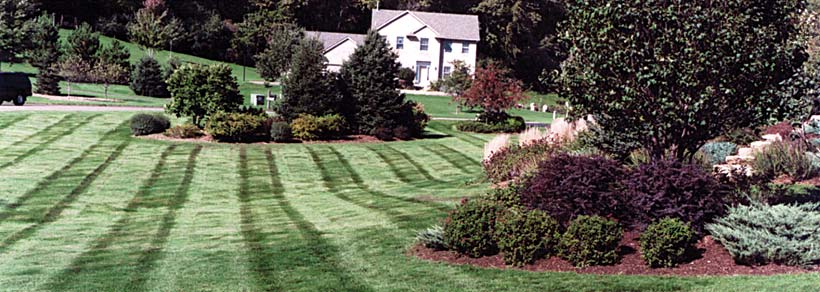Fall Lawn Care Tips

Fertilization and Weed Control
✓ One treatment of fertilizer and weed control applied early fall.
✓ Winterizer treatment applied a few weeks before the ground freezes.
Mowing
As temperatures moderate in September, gradually lower the mowing height. The purpose is to encourage the grass to send out shoots from the base of the plants that will thicken the turf the following Spring. You may consider lowering your mowing cutting height to 2 ¼" for the final cut of the season but no lower.
Remember to always use a sharp mower blade and never cut off more than 1/3rd of the grass blade.
Watering
Water your lawn deep and less frequent. Light watering produces shallow grass roots. Deep watering produces a healthy root system, thus healthier grass.
Lawns require 1" of water per week. Depending on soil type, apply the whole 1" at one time, or water twice a week applying ½” of water at a time. How long to let your sprinklers run to supply a ½" or more of water depends on two things: how fast the water comes out of the sprinkler and how fast the soil can absorb it.
✓ Water deep and less frequent - irrigation systems should not run every day
✓ Always water in the early morning; this allows foliage to dry before evening
✓ Never water in the afternoon due to evaporation
✓ Never water in the evening because the grass will spend the night moist, which may foster fungal disease (Helpful reminder: never put your baby to bed with a wet diaper!)
Water your lawn up to a few weeks before the ground freezes.
Core Aeration
Labor Day weekend through the end of October.
Lime
Recommended every other year.
✓ Maintains soil pH level
✓ Contains Calcium and Magnesium - key secondary nutrients that grass plants require in high amounts. These nutrients facilitate nitrogren uptake by the plant and increase root growth
✓ Enhances seed germination
✓ Breaks down thatch




